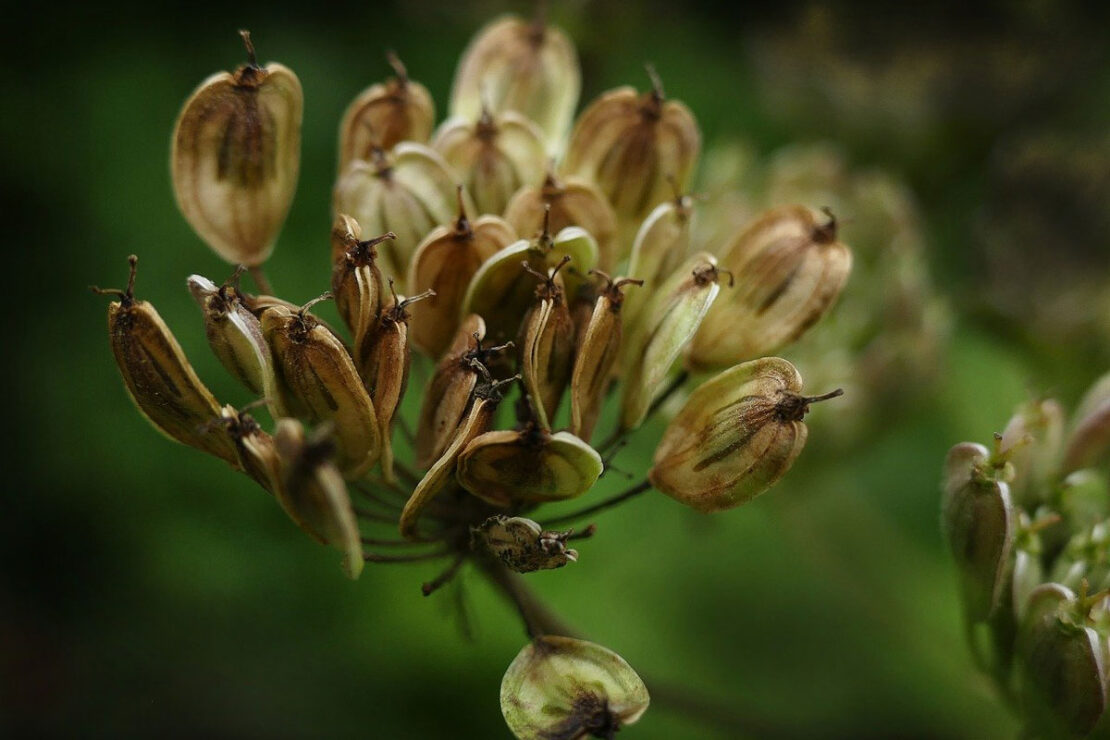
Anise vs. Anise Hyssop: What’s the Difference?
It is easy to make the mistake of thinking that the name anise is just an abbreviation for the anise hyssop plant. Many people assume that they are the same thing, when in fact, they are actually two completely different plants. Both plants share one major characteristic–a rich licorice aroma and flavor–but the fresh plants look very distinct and are native to different parts of the world.
In this article, we are going to explore the differences between these two plants so that you will be able to use your expert herbal wisdom to differentiate between these two aromatic plants. You will also learn about some of the potential health benefits these two herbs have to offer. (As a side note, star anise (Illicium verum) shares a similar flavor profile with anise and anise hyssop, but is distinctive from these two.)
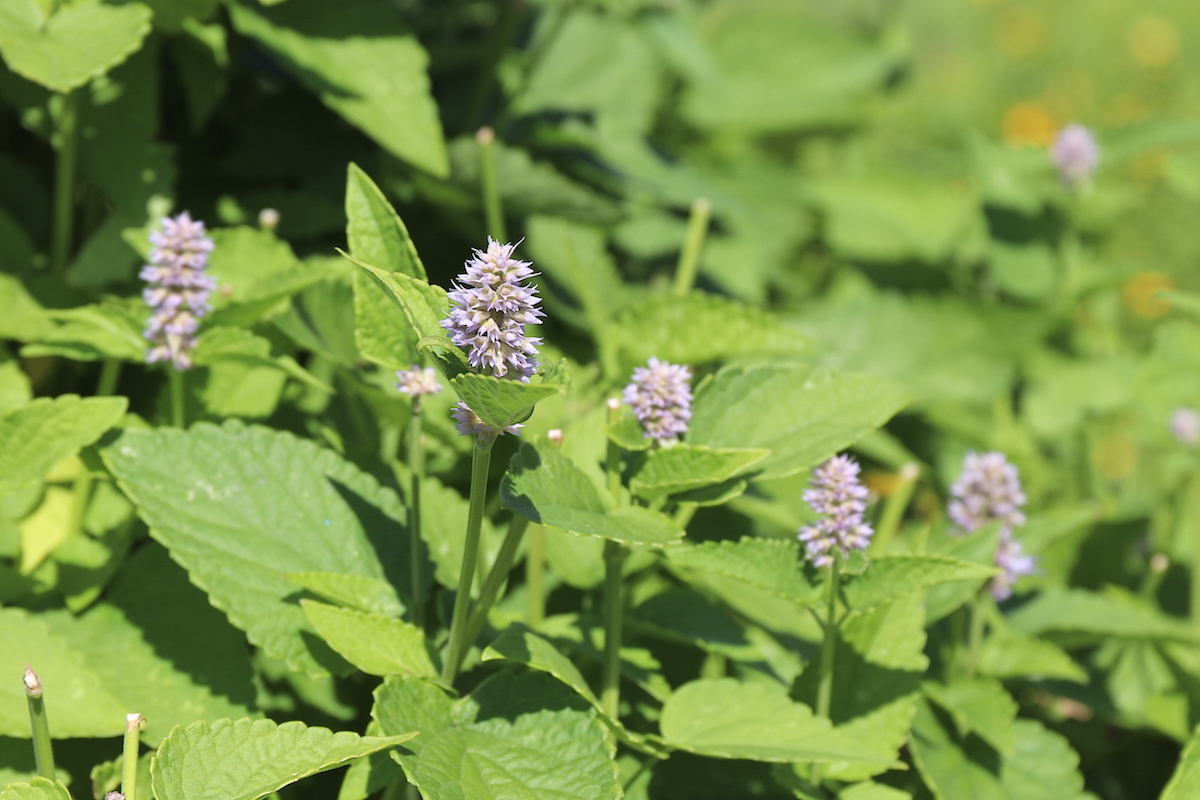
Anise Hyssop (Agastache foeniculum)
Anise hyssop (Agastache foeniculum) is an aromatic perennial plant in the Lamiaceae, or mint, family. In midsummer, a terminal spike of flowers forms at the top of each plant stem, ranging in color from bright blue-lavender to white. The leaves have ovate to heart-shaped leaves (Mahr, n.d.). A pollinator favorite, this plant often has bumblebees, butterflies, hummingbirds, and more floating around it.
This plant thrives in prairies, dry forests, grasslands, and gardens throughout the upper Midwest and Great Plains of the United States and into Canada (Mahr, n.d.). Like other mint family plants, anise hyssop has opposite leaves and square stems. The heart-shaped, serrated green leaves are highly aromatic and edible.
The plant likely gets its name due to its licorice-like, or anise-like, smell and flavor. In fact, it is often referred to as licorice mint for this reason. The leaves have been traditionally used in culinary and herbal preparations for centuries, often added to jellies, jams, salads, or herbal teas (Mahr, n.d.).

Herbal Applications of Anise Hyssop
The leaves have also been traditionally used as a poultice for wounds and sores. Due to its potent aromatics, it is popular in aromatherapy and commonly seen in potpourri, perfumes, and essential oil applications.
Anise (Pimpinella anisum)
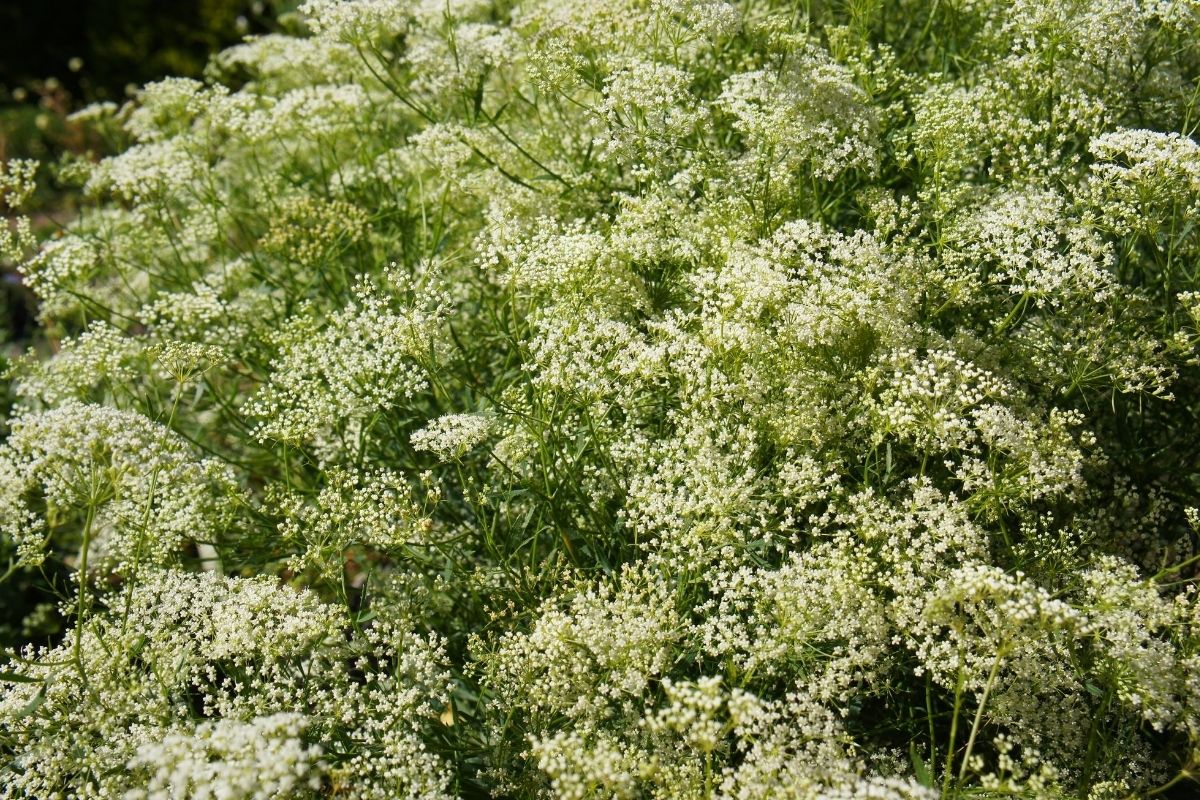
The common name for this plant, anise, is used in addition to aniseed, which hints at the plant part that is used. This spice is native to the range of southeast Turkey through central Israel, Cyprus and also grows in the Mediterranean, West Asia, the Middle East, Mexico, Egypt, and Spain (Royal Botanic Gardens, n.d.). The Latin name is Pimpinella anisum and it is in the Apiaceae or Umbelliferae family, commonly known as the carrot family. This family contains many umbellifer plants, like wild carrot and cow parsnip, which are all distinguished by umbels, flat-topped flower clusters that look like an upside down umbrella.
The upper leaves of the plant are thin and lace-like, similar to dill, while the lower leaves are wider and look like parsley leaves (Stephens, 2021). It is an annual plant that blooms tiny, starry-white flowers that eventually turn into small greenish-yellow fruits, often referred to as seeds or aniseeds. The fresh leaves are sometimes used as a garnish or to add flavor to dishes, but the seeds are the star of the show, highly revered for their flavor and aromatics.
The seeds have a potent aroma and flavor akin to licorice and are harvested for culinary uses, essential oil production, and different herbal preparations. Aniseed is traditionally used in meat and vegetable dishes, as well as desserts like ice cream and candies.
Herbal Applications of Anise
Aniseed is commonly used in herbal recipes for its ability to support the digestive system. It is known as a carminative, an herb that helps digestive upsets like gas, bloating, and indigestion. It also has mild muscle relaxant and analgesic qualities that can help ease stomach aches and has also been shown to help ease nausea, constipation, and difficulties from gastric ulcers (Sun et al., 2019).
Cautions
This plant is in the same family as wild hemlock or poison hemlock (Conium maculatum), which is highly toxic when consumed. Poison hemlock looks quite similar and sometimes it can be hard to tell the difference between poison hemlock and other Umbelliferae family plants in the wild. Always be absolutely certain about plant identification before consuming or using any wild plants in herbal preparations.
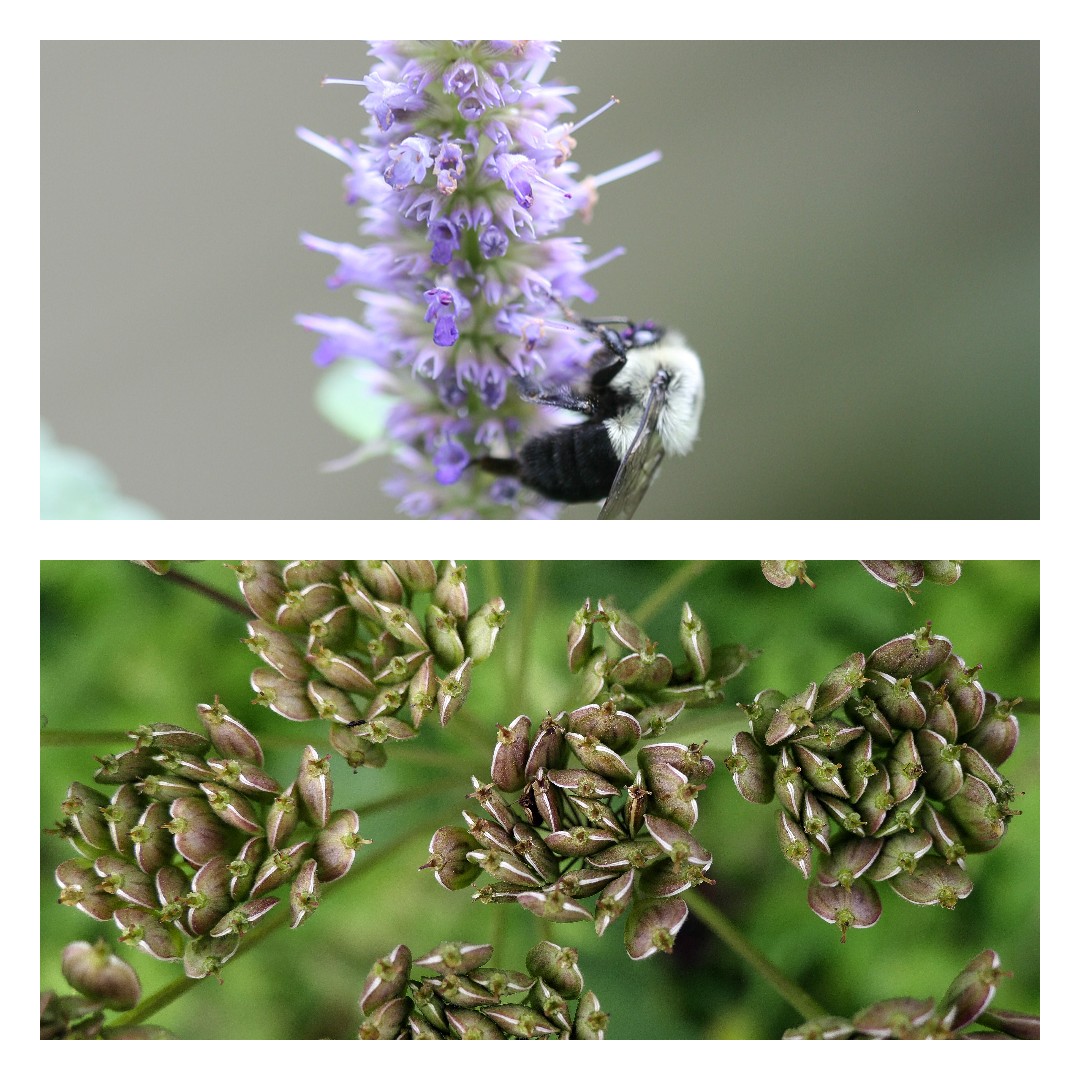 Comparing the Two
Comparing the Two
While anise and anise hyssop both share a similar smell and taste profile, they have many differences. The fresh plants look very different, with anise hyssop sprouting spikes of purple flowers while anise boasts umbels of tiny white flowers.
The leaves of each plant also look distinctive, with anise resembling the common kitchen herbs dill and parsley, while anise hyssop has ovate to heart-shaped leaves similar to lemon balm, another mint family plant. The aromatics in anise hyssop reside mainly in the plant’s leaves, while anise mostly holds its aroma in its seeds.
Both plants have been commonly used in culinary, aromatherapeutic, and herbal applications, but for different reasons. Anise has an affinity for the digestive system, while anise hyssop is more often used for the respiratory system. However, each plant is highly valued for its aromatic and antioxidant qualities.
In Closing,
Both plants hold important places in the herbalism and aromatherapy realms. At first glance, it may seem like they are the same plant, but after diving deeper into the botany and history of each species, it is obvious that these two plants are distinctly different, each offering their own gifts to the world.
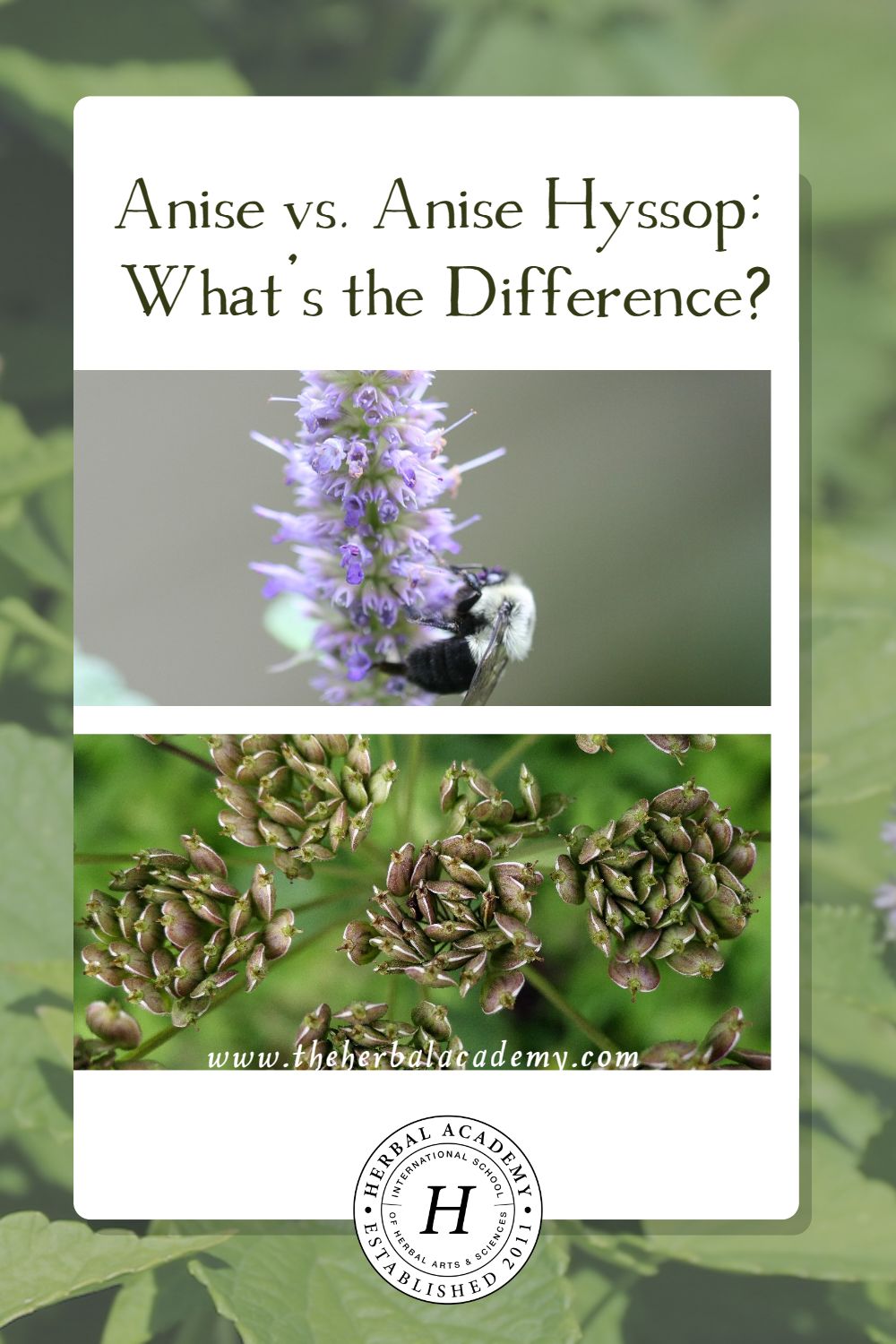
REFERENCES
Mahr, S. (n.d.). Anise hyssop, Agastache foeniculum. University of Wisconsin Horticulture. https://hort.extension.wisc.edu/articles/anise-hyssop-agastache-foeniculum/
Royal Botanic Gardens. (n.d.). Plants of the World Online. https://powo.science.kew.org/taxon/urn:lsid:ipni.org:names:846658-1
Stephens, J. (2021). Anise – Pimpinella anisum L. University of Florida, Institute of Food and Agricultural Sciences. https://edis.ifas.ufl.edu/publication/MV008
Sun, W., Shahrajabian, M. H., & Cheng, Q. (2019). Anise (pimpinella anisum l.), a dominant spice and traditional medicinal herb for both food and medicinal purposes. Cogent Biology, 0(0). https://doi.org/10.1080/23312025.2019.1673688







